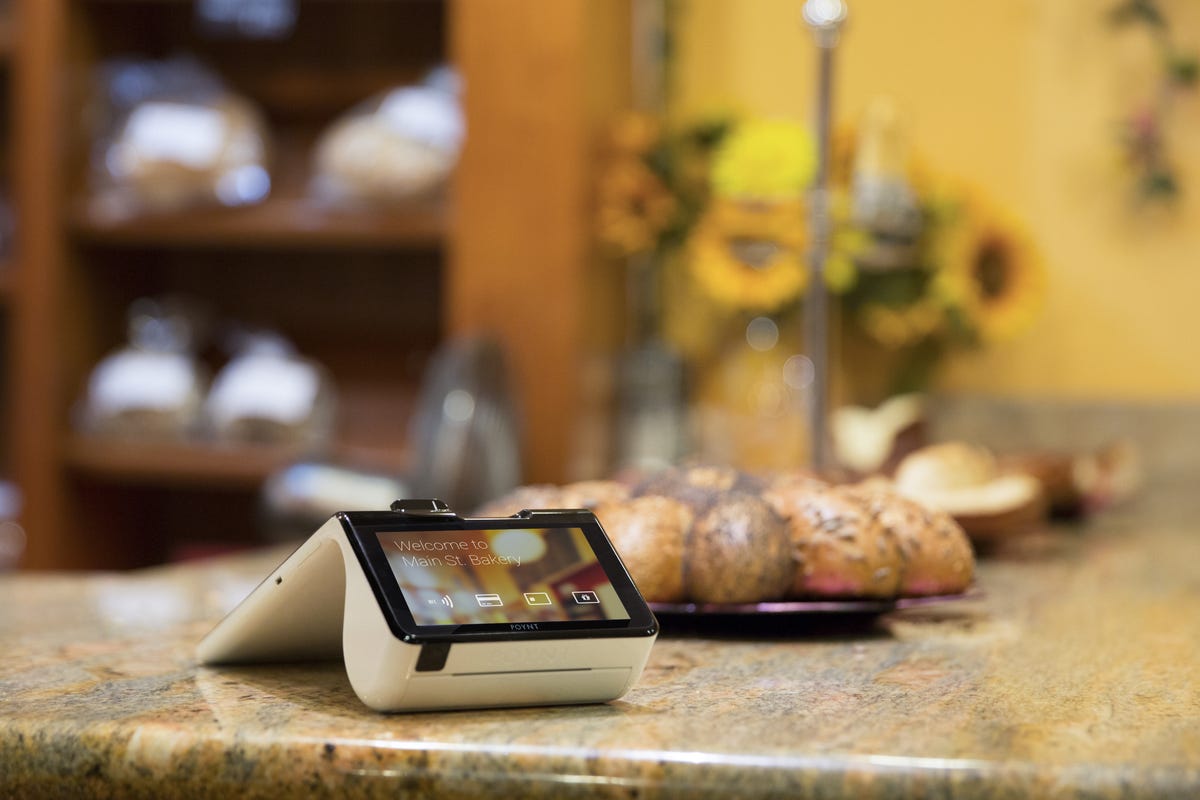
Poynt
Credit cards with magnetic strips. Cards with chips. Smartphones that use near field communication (NFC) and ones that read QR codes. The way things are going, consumers will need a scorecard to figure out if — and how — they can pay for in-store purchases.
Osama Bedier, who created Google Wallet and once led engineering at PayPal, thinks he has the answer: a payments machine that can handle almost any form of payment you throw at it.
His latest company, Poynt, announced a new payments terminal Wednesday, and it’s poised to benefit from a huge, mandated infrastructure upgrade. By October 2015, all US merchants will have to replace their payment machines with ones that take chip-and-pin, or EMV, embedded cards designed to be more secure than the common magnetic strip found on today’s credit and debit cards. That’s an estimated 16 million payment devices that will need an upgrade, and Bedier is ready for it.
“The majority of retail establishments don’t have smart, connected devices that our phones can interact with,” he said. “The imagination is there, the hope is there, but we haven’t actually seen it.”


Poynt
There’s a lot of technology that exists for in-store payments but isn’t widespread yet, like paying for items simply by walking out of a store or receiving loyalty points automatically when you make a purchase. Bedier thinks his machine, which runs on a variant of Google’s Android operating system, can help make this happen.
His new team built an all-in-one payments device, complete with touch screen, bar code scanner and printer built in. Although it’s similar in shape and size to a standard payments terminal — devices that are slightly larger than a brick and look somewhat like a large calculator that you might see at a small or midsized merchant shop — it will come with multiple payment options and an application program interface, or API, that will allow developers to build apps for it. The device, which is also wireless, launches with three stock apps that handle transactions and do some basic analytics. Poynt plans to start shipping the $299 device to merchants in early 2015.
To be sure, Bedier has lofty goals. He wants to do what Apple’s iPhone did for smartphones — he wants to transform an entire industry with his Poynt machine. He certainly has the chops (“I was in payments before it was sexy,” he jokes), and serves on the board of multiple payment companies: Qiwi, WePay, Payrange and Coin. But, there’s also plenty of competition for terminals, even a few “smart” ones, and inexpensive credit-card readers from Square and PayPal.
Bedier said none of these other options is going as far as his machine. Poynt will take multiple payment technologies, including magnetic stripe cards, EMV cards, NFC (near field communications, the tech that makes Google Wallet and Apple Pay work), QR codes (what Starbucks uses) and even low-energy Bluetooth “beacon” devices that can transmit information over a longer range than NFC. Bedier is betting that these are the five payment technologies the commerce industry will reply on over the next 10 years.
Poynt is also opening up its API on Wednesday to attract developers who can add functions, like loyalty programs or more complicated analytics. Six developers — Vend, Kabbage, Swarm, Boomtown, Bigcommerce and Intuit — are already creating apps.
Related Links
- Apple caught in feud between merchants, credit cards
- Can a phone replace your wallet? I went shopping to find out.
- Redesigned PayPal app wants you to order ahead, skip lines
- Pressure is on: eBay needs to deliver after PayPal’s spin-off
What’s even more important is that Poynt has struck deals with banks to push these terminals to merchants. Because the mandate to add EMV technology comes from the banking industry, this is likely to give Poynt a distribution advantage.
His machine won’t be for every merchant. Bedier thinks people who process small amounts will still prefer to rely on things like mobile credit-card readers, but people who process between $20,000 and $10 million in sales a year — such as a local coffee chain or a dry cleaner storefront, according to Bedier — need a machine that can do more. There are 5 million merchants like this in the US, based on Poynt’s internal research.
It’s giving the merchants a solution that in the end will help consumers who want to use technology like Google Wallet and Apple Pay, Bedier said.
“The only way to really change payments is to solve a merchant problem that will solve a consumer problem,” he said. “Otherwise it’s not going to work.”



